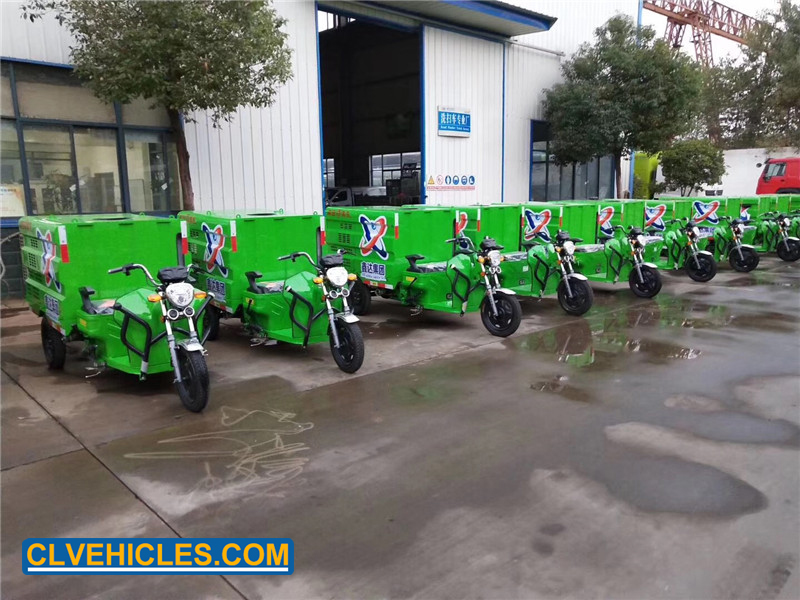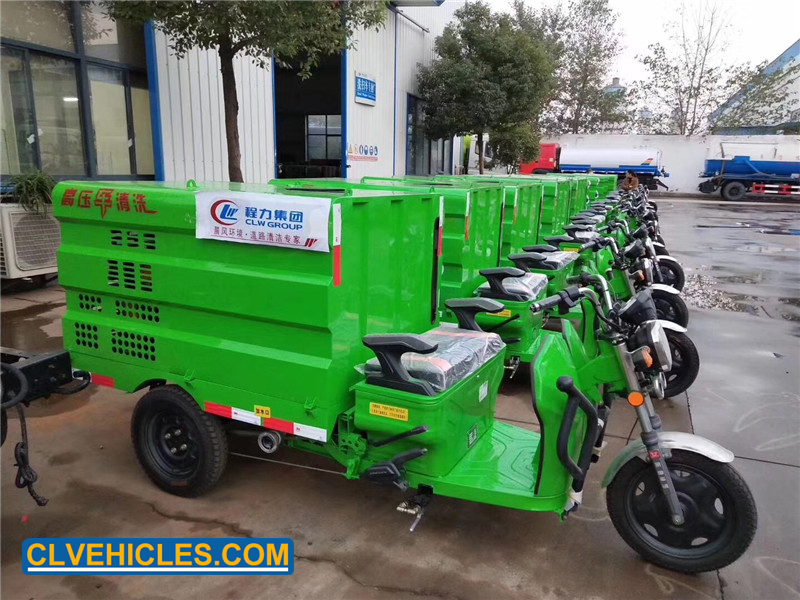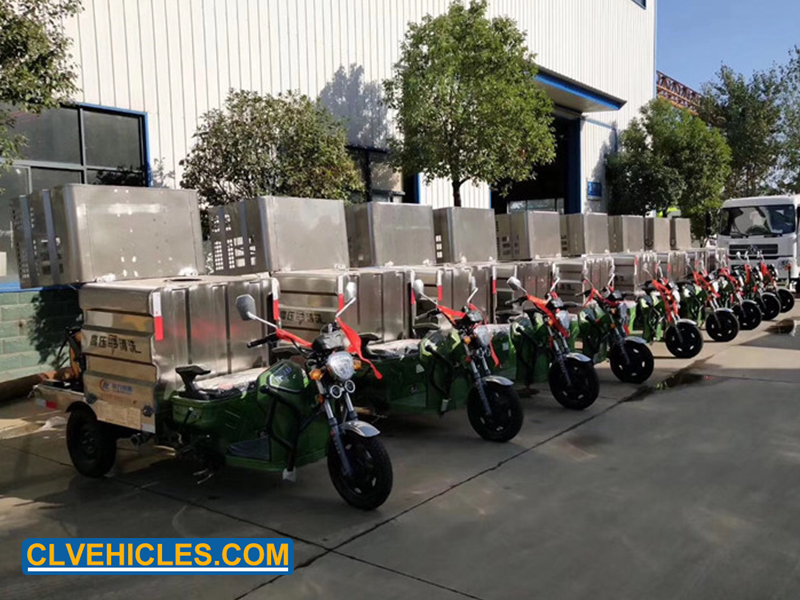Small three-wheel sprinklers are also known as spray trucks, multi-function small three-wheel sprinklers, landscaping small three-wheel sprinklers, water tankers, and water trucks. The small three-wheel sprinkler is suitable for all kinds of road surface washing, trees, green belts, lawn greening, construction of roads, factories and mines, and high-altitude building flushing. It has the functions of water transportation, drainage, emergency fire fighting, watering, dusting, high and low level spraying, pesticide spraying and guardrail washing. It is equipped with front, rear and side spray, self-priming special water pump, pump can pump water and drainage, with fire joint, self-flow valve, tank with working platform, green sprinkler can be installed, gun can be rotated to adjust the amount of water ( The spray is column, fog, drizzle). Front punching (spraying), back sprinkling, side spraying (shower), post-working platform, and installation of green sprinklers on the platform (cannon spray shape can be adjusted: straight flush, heavy rain, moderate rain, drizzle, fog, can Continuous adjustment, 360° rotation), equipped with fire-fighting interface, self-flow valve, filter screen, with self-priming and self-discharging function. It is equipped with high-power special sprinkler pumps, power take-offs, ball valves, strainers, water pipes, sprinklers, etc., which are equipped with national quality evaluation*. Pumps, power take-offs, ball valves, and strainers are all national standard products, featuring excellent performance, reliable operation, high efficiency, large flow, and convenient maintenance.

The small three-wheel road cleaning car wash tank body is oval or square, made of WISCO high-quality carbon steel plate, 1.5 m in the tank compartment, with anti-wave and anti-sway effect, and can also carry out professional anti-corrosion according to user requirements. Anti-rust treatment, foaming or rock wool can be installed on the outside of the tank to maintain the heat preservation function. Optional charging plate, medicine pump, high-pressure spray equipment, non-vehicle pump power, etc., anti-corrosion and anti-rust in the tank, multi-directional water inlet and outlet joints, pneumatic valves and other advanced facilities to meet the needs of different users.

Application range
1. The district, square, park, scenic area, small town and other roads are sprinkled with water. In winter, it can dissolve ice on the road surface and dissolve snow.
2. Prevention and control of pests and diseases in municipalities, gardens, green belts, lawns, nurseries, scaffolding crops, greenhouses, and flowering trees.
3. Health, epidemic prevention and disinfection of training venues, camping quarters, and disaster areas.
4. Cleaning and disinfection of stations, hospitals, hotels, swimming pools, waste disposal sites, slaughterhouses, fishery trading sites, grain depots, zoos, etc.
5. Sprinkler maintenance on construction sites, dusting, construction roads, etc.

The electric three-wheel road cleaning vehicle is a mobile washing machine specially designed for sanitation, property and cleaning companies. The product adopts high-quality electric tricycle chassis, equipped with professional high-pressure washing machine and water pump, which is convenient and quick to use. Built-in 600 liter special plastic water tank, permanent rust prevention, is the most cost-effective washing car products for urban streets and property communities.

Electric three-wheel high-pressure cleaning car features: strong applicability, flexible and simple, easy to maintain, low price, etc., can be flexibly traveled between narrow roads. The electric tricycle has a reverse switch, which can easily realize the reverse running function. This is very practical in the narrow alleys and alleys of the road, which is very convenient for parking. It is convenient and quick to add water to the fire hydrant. FB-BJWP01 fog gun three-wheel high-pressure cleaning car is an environmentally friendly, clean, high conversion rate of important dust-reducing equipment, is a epoch-making new generation of sanitation washing products.













